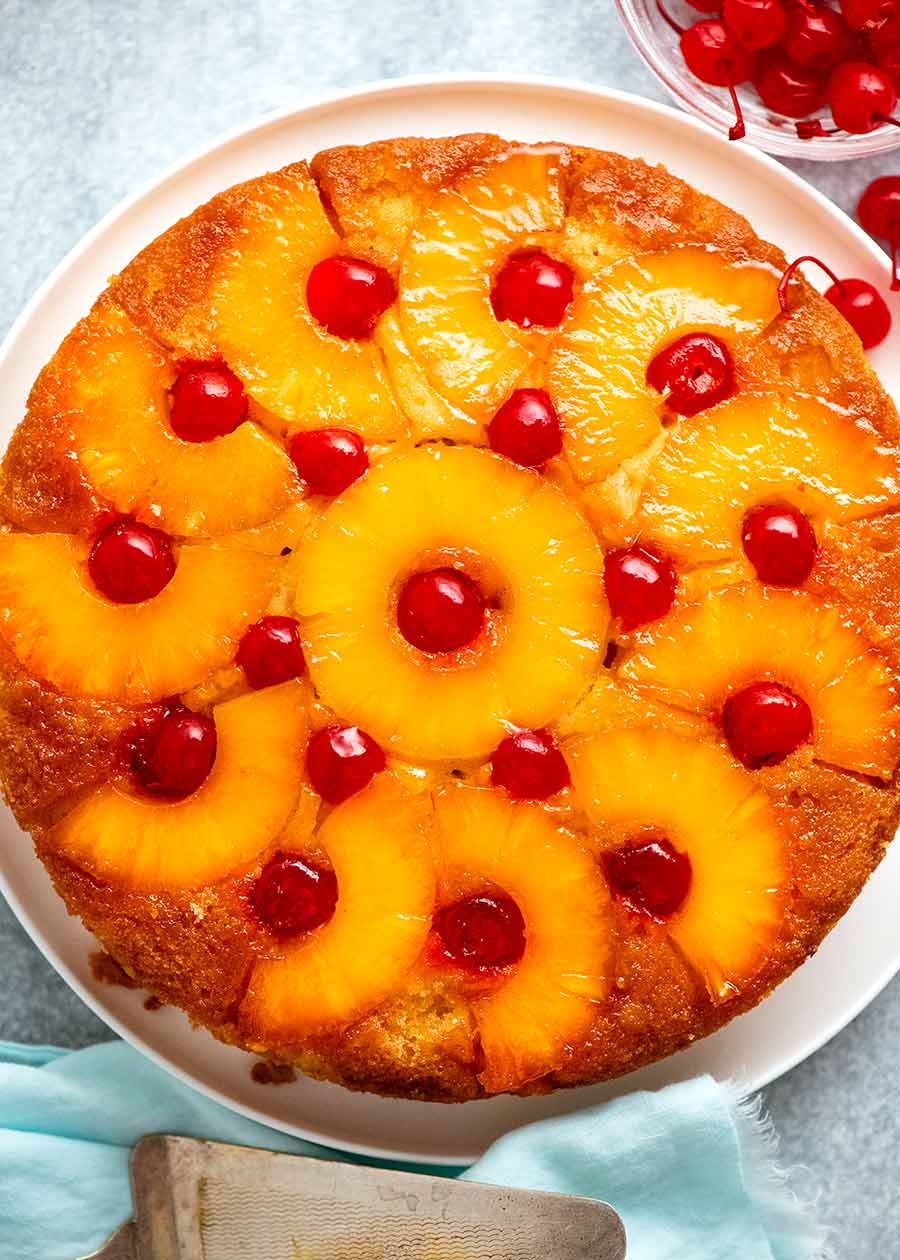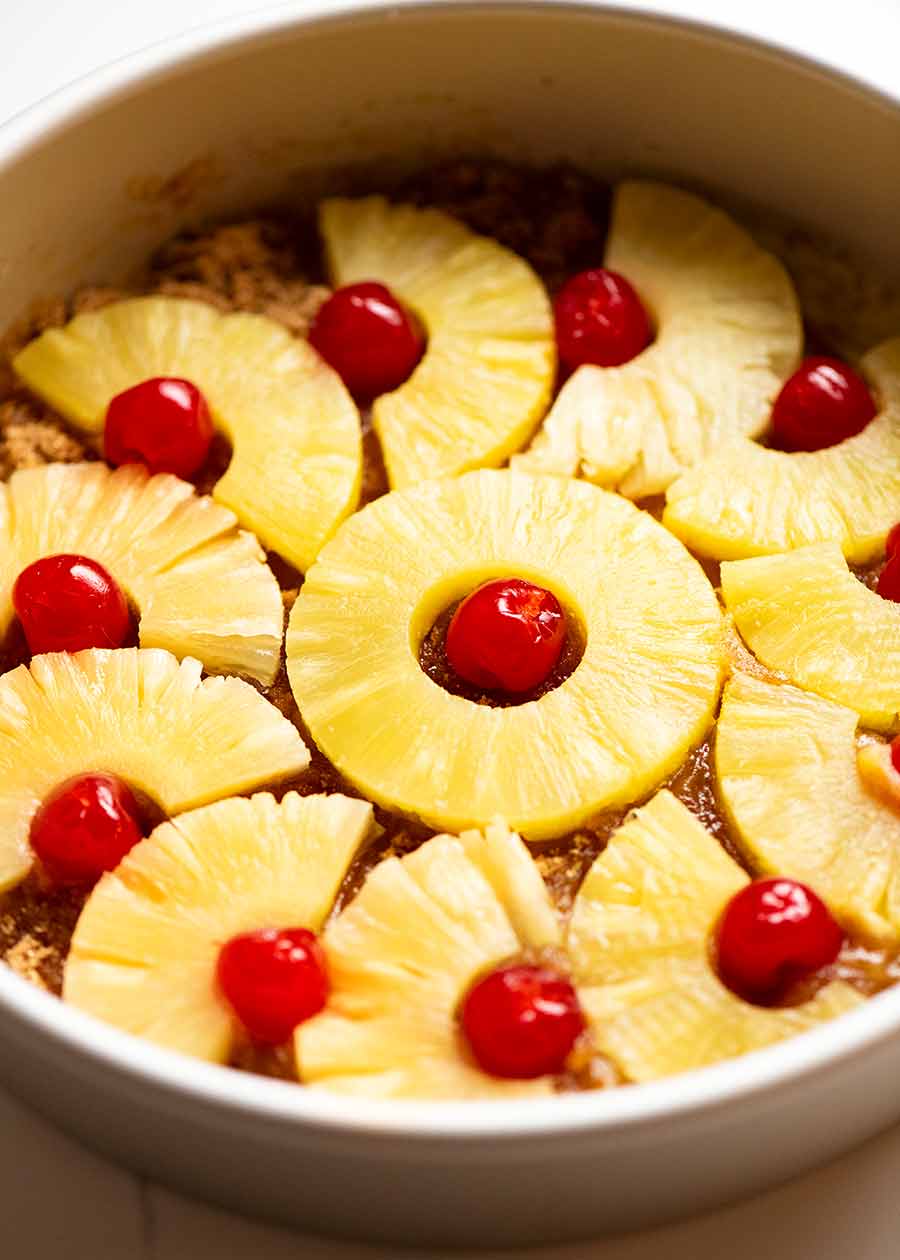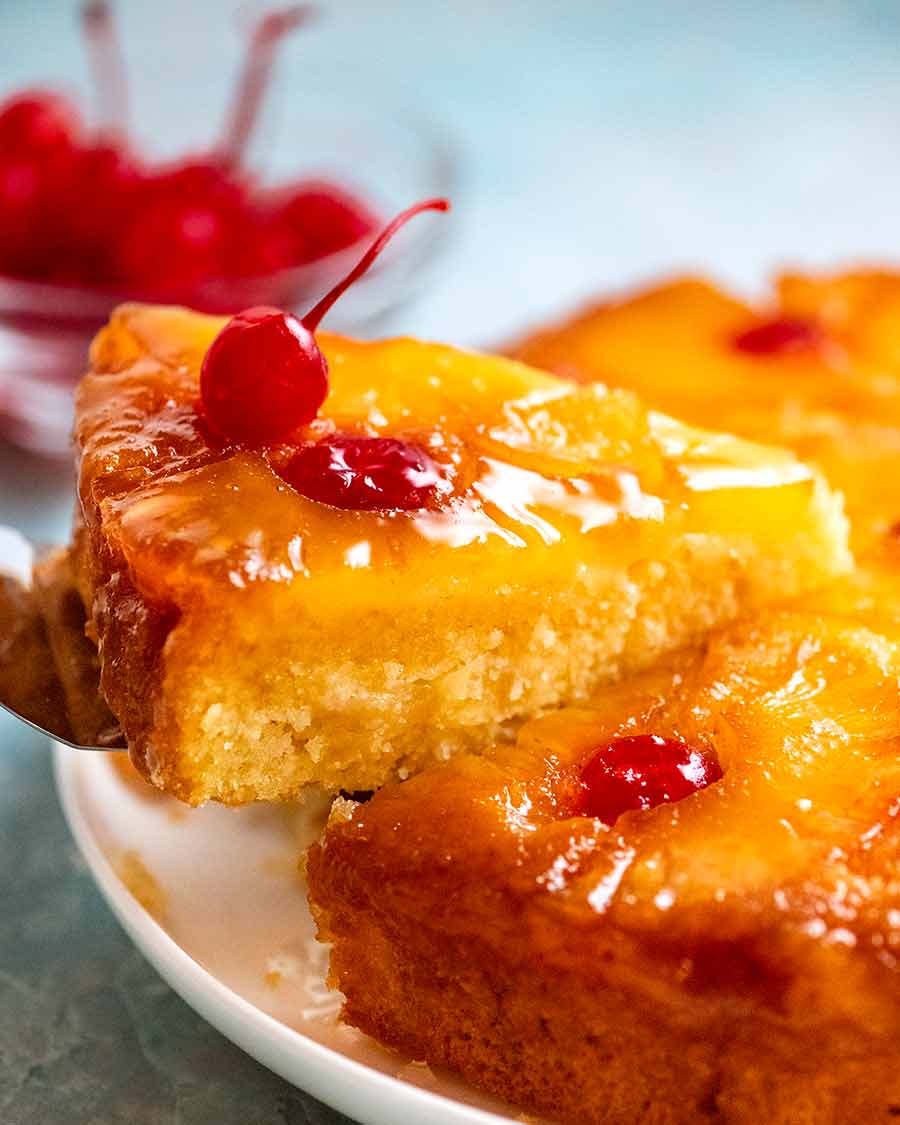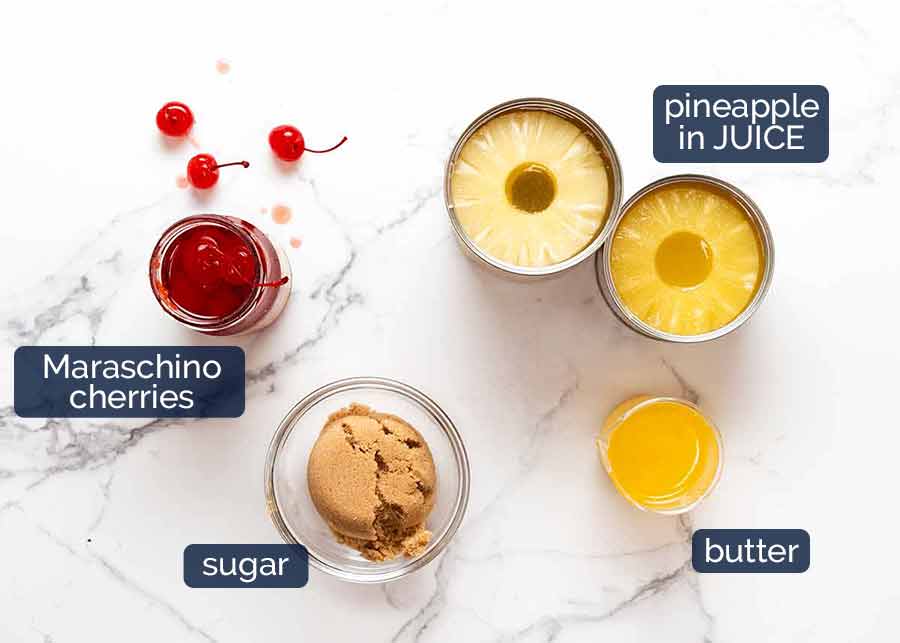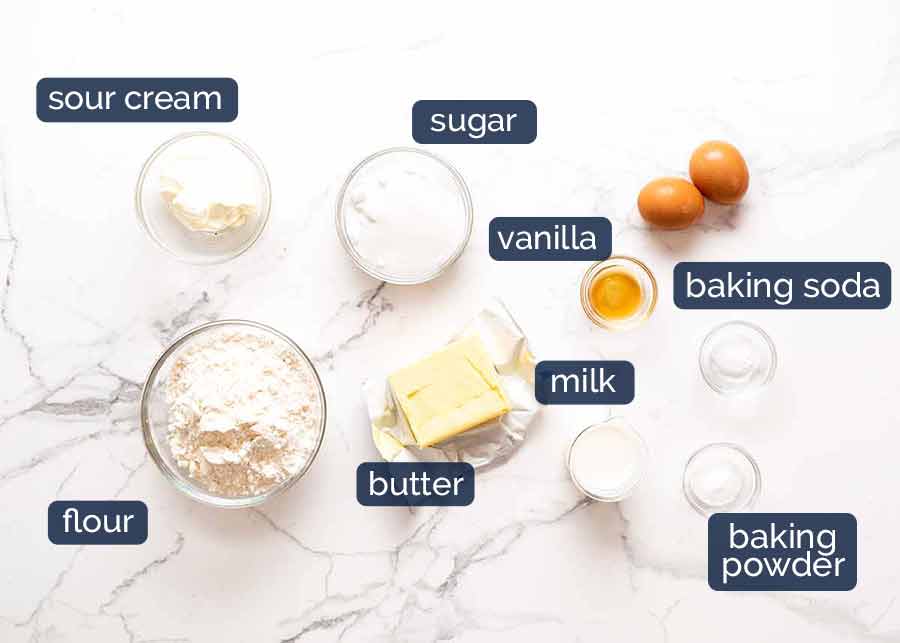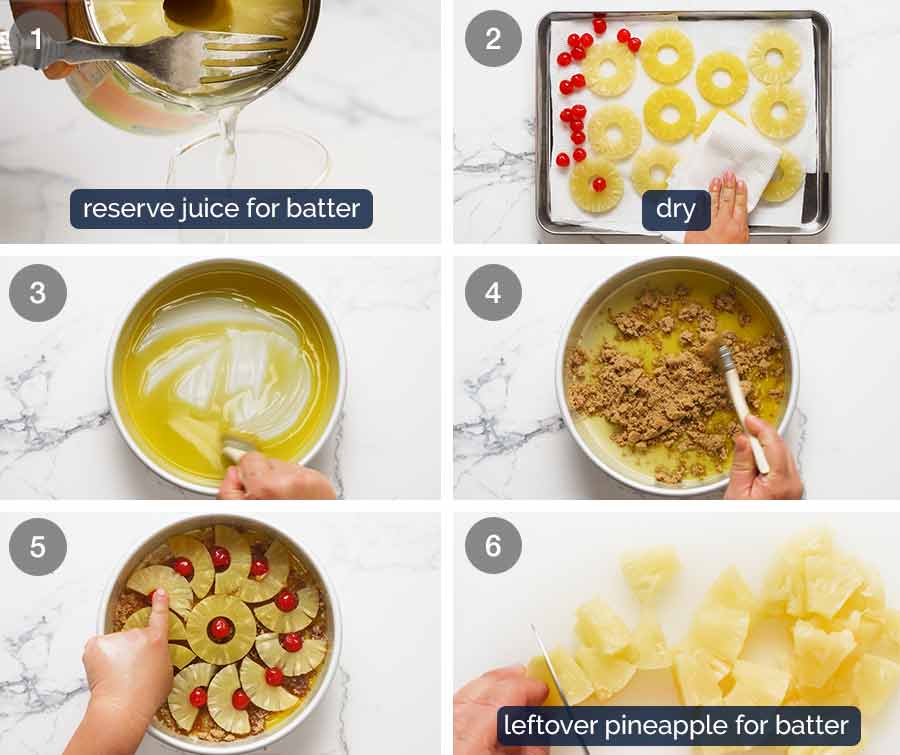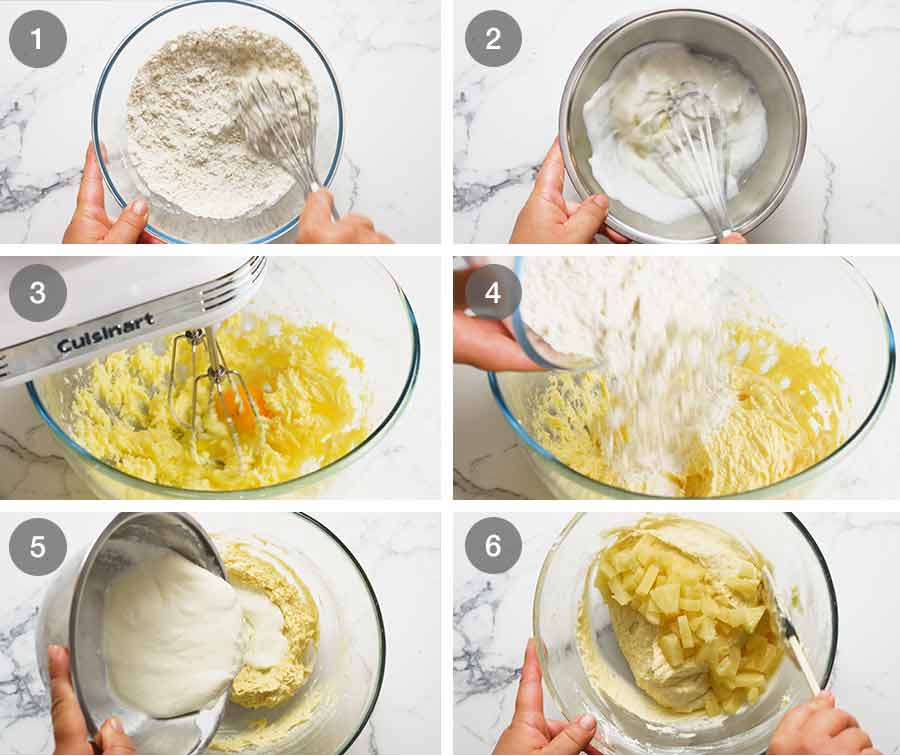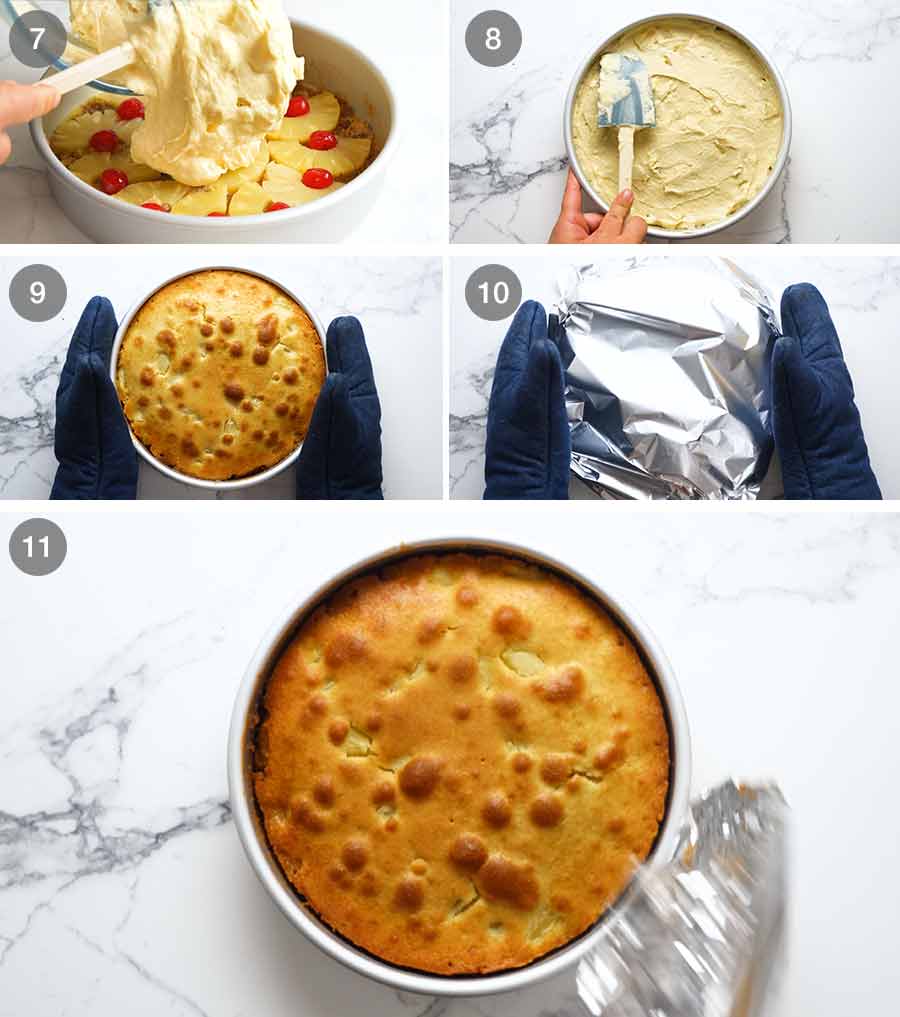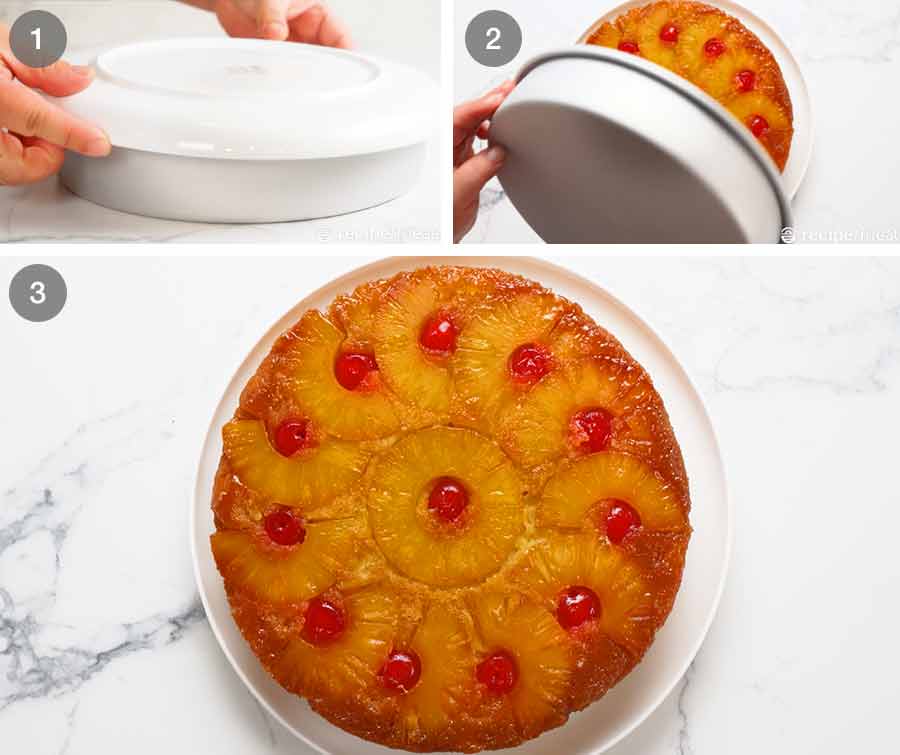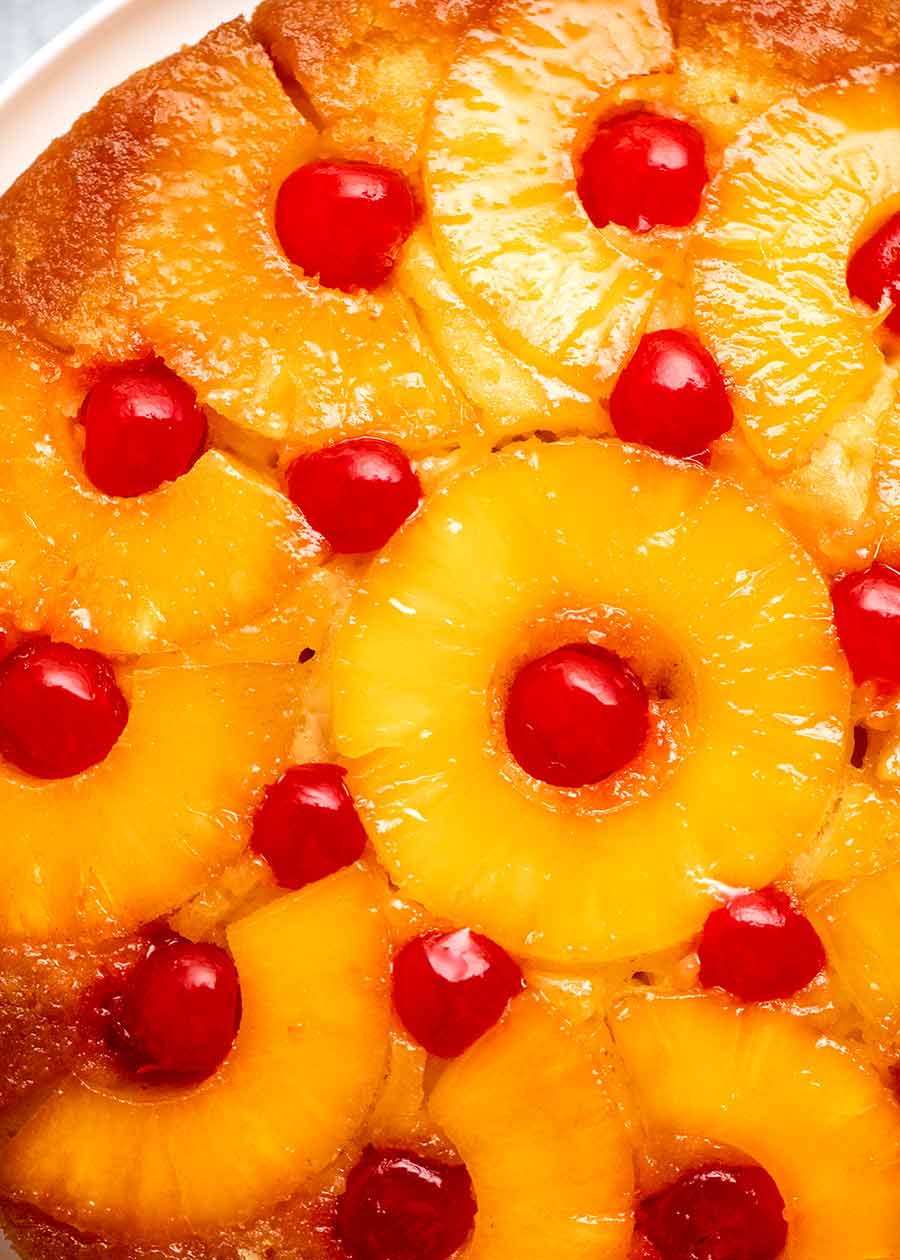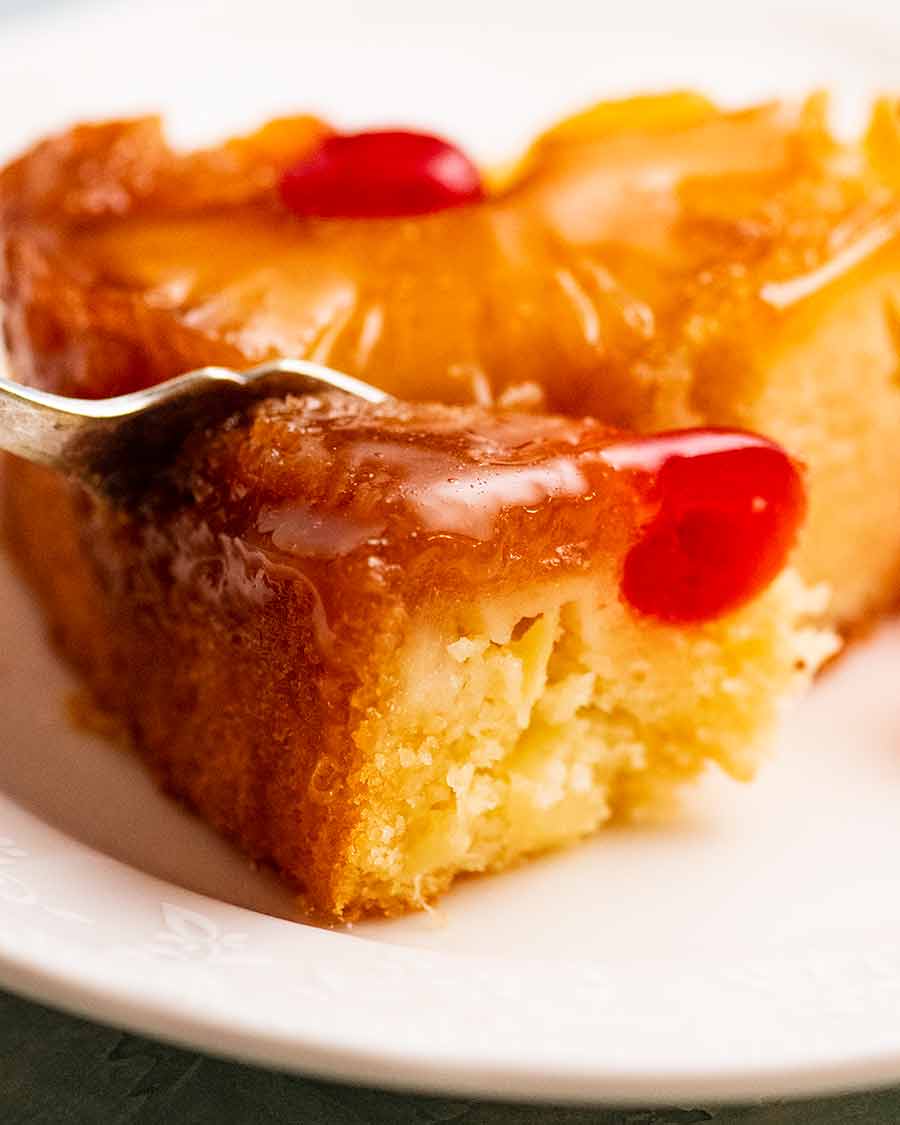Pineapple Upside Down Cake
“Everything is brown!“, I observed, looking at the latest dessert recipes I’ve shared. “Chocolate, caramel, fruit cake – brown, brown, brown. Give me some COLOUR!” And therein lies the exact reason I chose to share this cake today. A girl needs a splash of colour in her life every now and then, despite her commitment to all things chocolate. And this girl needs little encouragement to bring retro fun into her life! Disco balls and flares, perms and … Apricot Chicken?? Hmm, I might pass on the Apricot Chicken!
Pineapple Upside Down Cake – What it tastes like
Pineapple Upside Down Cakes were all the rage from the 60’s right through the 80’s. Though as far as Aussies are concerned, they never went out of fashion. Rarely a summer would go by without one making an appearance at a barbie at some stage! (That’s a barbecue to you non-Aussies!) “Upside Down” refers to the way the cake is made. Like a French tarte tatin, the cake is assembled and baked with fruit at the bottom and the batter on top. To turn it out, you flip the cake upside down, leaving you with the glistening, caramel-napped fruit layer exposed and the cake underneath it – Upside Down Cake! The cake part is a vanilla cake. You’ll see versions that are more on the pudding-like side (ie. quite dense and wet like syrup-soaked cakes) and others that are quite dry sponge cakes. Mine lies squarely in the middle. It’s soft and fluffy, like my classic Vanilla Cake (except this is faster to make), but it is a bit more moist than traditional cakes because of the juices from the pineapple (and we are all for those juices!). As for that pineapple topping? Think juicy pineapple pieces with caramelised edges, studded with sweet candied cherries. It is literally the crowning glory of this cake!
What you need for Pineapple Upside Down Cake
Pineapple Cherry Topping
Here’s what you need for the signature pineapple-and-cherry-studded topping:
Pineapple slices in JUICE – Be sure to get canned pineapple slices in juice rather than syrup. Syrup is too sweet for our needs. Also, we use some of the juice for the batter – and we save the rest for cocktails!The recipe calls for 600g/20oz of canned pineapple. Those of you in Australia will need 1 large can (425g) and 1 small can (225g) which together totals 650g. This is more pineapple than you need to cover the surface. So chop up leftovers and toss them into the batter!Maraschino cherries (image below) – These are preserved, sweetened cherries commonly used as a cocktail garnish, such as for a Tequila Sunrise, and desserts like Black Forest Cake. True maraschino cherries are marinated in a cherry liqueur called maraschino – hence the name. However these are expensive and hard to source, so mostly you’ll find cheaper substitutes that don’t use real maraschino. These are totally fine and actually better here for their vivid colour! Find it at liquor stores and some grocery stores, such as Harris Farms in Sydney. Substitute with glacé cherries; andButter and brown sugar – Together, these form the shiny caramel coating on the top of the cake.
Cake Batter
Here’s what you need for the cake batter: The recipe calls for 600g/20oz of canned pineapple. Those of you in Australia will need 1 large can (425g) and 1 small can (225g) which together totals 650g. This is more pineapple than you need to cover the surface. So chop up leftovers and toss them into the batter!
Flour – Just plain/all-purpose flour;Sour cream – This is a neat baker’s trick to thicken the batter without adding more flour, keeping the crumb of the cake nice and moist. We need a thick batter for this cake so it doesn’t leak under the pineapple slices which would tarnish the look of the surface!Sugar – White sugar, which makes a nice light coloured cake crumb;Unsalted butter – Softened to room temperature (18°C/64°F). This is the temperature at which butter is pliable and can be beaten (creamed) so it’s nice and fluffy, which in turn means a fluffy cake. If the butter is so soft that when you touch it, you end up with a thick slick of grease on your fingers, it is too soft. This will likely lead to a greasy cake, or one that does not rise as much as it should. If your butter is >20°C/68°F, I wouldn’t use it for a cake. Refrigerate to chill before using;Large eggs, at room temperature – “Large eggs” are 55-60g / 2oz each, which an industry standard. Large eggs are sold in cartoons labelled as such.It’s important to ensure the eggs are at room temperature before using in cakes to ensure they incorporate fully. Fridge-cold eggs added into a batter with butter in it can cause the butter to solidify – spelling disaster! What is an egg at room temperature? Just take it out 30 minutes prior to using. As long as the egg is not fridge-cold when you hold it, it’s fine. There is more margin for error with eggs than there is with butter;Baking soda AND baking powder – I always try to avoid the need for using both but sometimes it’s inevitable! Baking soda is like baking powder on steroids, it is 3x stronger. When combined with an ingredient with even a bit of acid in it (sour cream in this case), you get a great lift boost when the cake goes in the oven. This cake benefits from that extra boost because the batter is quite heavy. So unfortunately, we need both!Milk – Any fat % is fine here, it’s not a major ingredient; andVanilla extract – This adds better flavour than vanilla essence, but essence is fine to use too.
How to make Pineapple Upside Down Cake
I feel like there’s a lot of process step photos below, which is quite misleading given how straightforward the recipe is. It’s not hard, I promise. 🙂 If the butter is so soft that when you touch it, you end up with a thick slick of grease on your fingers, it is too soft. This will likely lead to a greasy cake, or one that does not rise as much as it should. If your butter is >20°C/68°F, I wouldn’t use it for a cake. Refrigerate to chill before using; It’s important to ensure the eggs are at room temperature before using in cakes to ensure they incorporate fully. Fridge-cold eggs added into a batter with butter in it can cause the butter to solidify – spelling disaster! What is an egg at room temperature? Just take it out 30 minutes prior to using. As long as the egg is not fridge-cold when you hold it, it’s fine. There is more margin for error with eggs than there is with butter;
Part 1: Prepare pineapple topping
Part 2: The batter
Part 3: Baking
Part 4: How to turn out Pineapple Upside Down Cake
There is nothing to fear with this step! And most importantly, I have NEVER had problems with the pineapple sticking to the cake pan – and as you can see, I do not use a non-stick pan! PRO TIP: If, when lifting off the inverted cake pan (slowly!), you can tell that the base is sticking, tap the base gently and/or shake gently. This will help loosen it. That said, with the amount of butter used in the base to make the caramel “sauce” that soaks into the pineapple topping, it is highly improbable that you’ll encounter sticking issues. But stranger things have happened in life! This is not a very tall cake. It stands around 4cm/ 1.6″ tall using a 23cm/9″ cake pan. A smaller cake pan would make it stand taller but it would take too long for the middle of the cake to cook before the caramel on the base becomes too brown, I think. Also, at this height, you have a nice ratio of cake to caramelised pineapple. Pineapple Upside Down Cake will keep for 5 days or so in the fridge. The crumb will get a bit more soaked with those caramel pineapple juices as it sits. But nobody complains, that’s for sure! – Nagi x PS. This is what I was listening to as I was typing up this post. Just in case you also want to get into the retro spirit. 👯♂️
Watch how to make it
More classic cakes
Life of Dozer
Cake, anyone?
